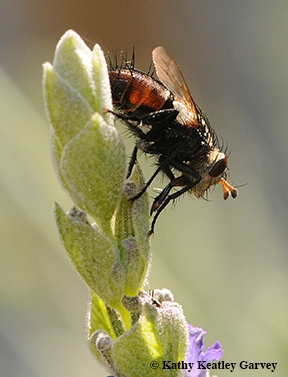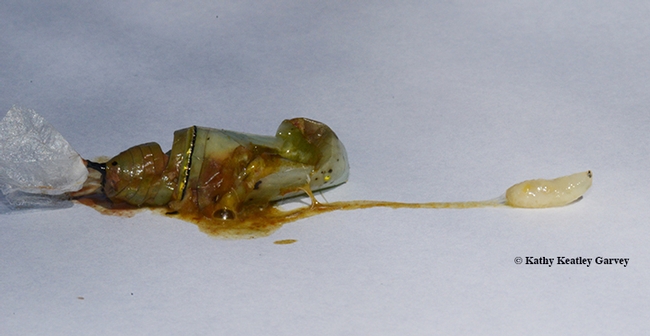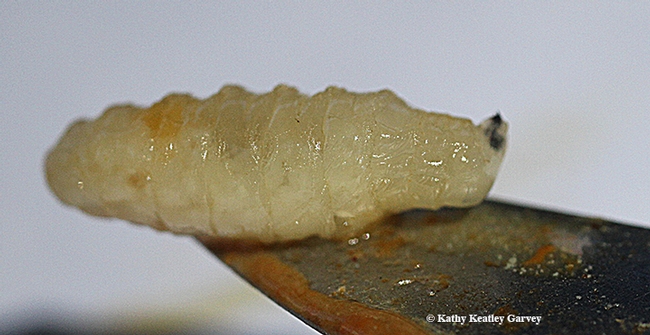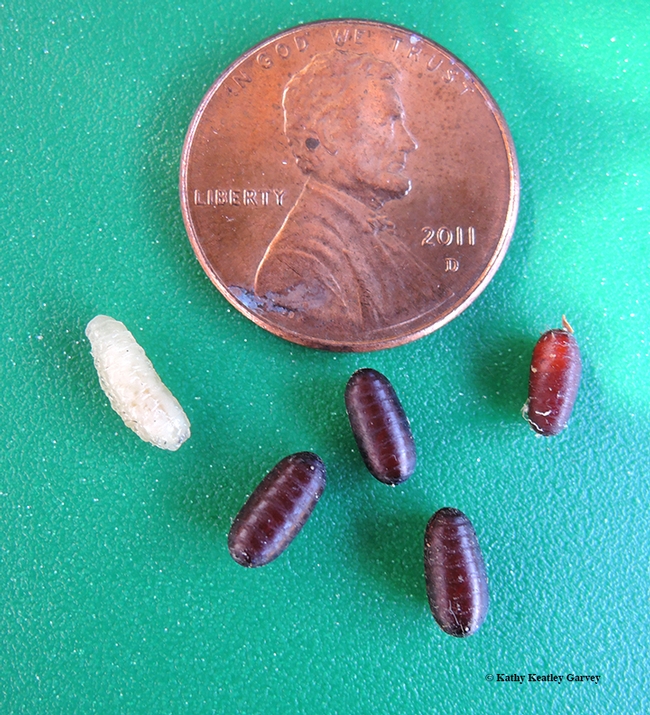It's no fun having a "hole in one."
A hole in your butterfly habitat.
So, here it is September of 2016 and we're at home rearing monarch butterflies as part of our small-scale conservation project to help the declining population.
The project involves growing several species of milkweed in our pollinator garden, and when we see caterpillars, we "bring them in." We fill a broad-based, narrow-necked Patron tequila bottle with water, add milkweed and 'cats, and tuck the bottle inside a zippered, pop-up mesh habitat (some call it a cage) to protect them from predators (like birds) and parasitoids (like tachinid flies). The butterfly habitat occupies a corner of our kitchen counter.

So, one day in September, I think: "Why keep the monarch habitat on our kitchen counter when it's so nice and shady and breezy by the crape myrtle tree in our backyard?"
So, I place the habitat on a wooden bench next to the crape myrtle. Ah. Mother Nature at its finest. Several caterpillars are in the "J" position (their position before they pupate) and several are chrysalids.
All's right with the world, right? Wrong.
The unexpected happens. The caterpillars begin shriveling. The chrysalids turn gooey brown. And right before my eyes--I happened to be in the yard at the time--I see tachinid fly maggots "bungee jumping" from their hosts. The maggots are sliding down their white mucus strings. Gleefully sliding, I think.
What?
Tachinid flies, you see, lay their eggs inside a living host, such as a monarch caterpillar or chrysalis. They eat the host from the inside out, kill the host, and maggots emerge. They're white at first but darken and harden to the color of coffee beans as pupae. The adult flies emerge, all ready to mate and start the life cycle all over again.
But how did they get into the thinly meshed habitat? How?
It is then that I notice a single, tiny, ragged hole in the netting. And oh, look! Another tachinid fly is trying to slip in.
I photograph Exhibit A, B, C and D; clean the cage with bleach and water; and vow that the butterfly habitat is best inside, not outside.
A hole in one is no fun.
Attached Images:

Tachinid fly maggot crawls from a monarch chrysalis. (Photo by Kathy Keatley Garvey)

Close-up of a tachinid fly maggot, freshly emerged from its host, a monarch chrysalis. (Photo by Kathy Keatley Garvey)

Size comparison: a penny, a newly emerged tachinid fly maggot and pupae. The maggot will soon darken and harden and turn into a pupa. (Photo by Kathy Keatley Garvey)
